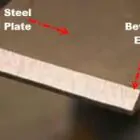Aluminum can be used to make products that last longer, are lighter, and work better in cold temperatures. This blog is about how you can weld aluminum with TIG. Aluminum is a good choice for making truck and trailer parts, piping for cryogenic fluids, and boat parts.
But welding aluminium is hard because you have to control the heat and deal with the oxide layer. Gas tungsten arc welding (GTAW) has long been thought to be the best way to weld aluminium because the welds are strong and look good.
When welding aluminium with GTAW, it takes practise and skill to get good welds and the desired “stacked-dimes” look. Also, it can help to stick to some key best practises.
Using GTAW to solve problems with aluminum
GTAW is a slow process that isn’t usually used in high-production manufacturing. However, it is often a good choice when welding aluminum when quality and appearance are more important than speed.
As soon as the welder squeezes the gun trigger during gas metal arc welding (GMAW) of aluminium, filler metal is fed into the puddle. Because of these “cold starts,” there may not be enough fusion and penetration.
With GTAW, you decide when to add the filler metal and can set up the puddle and make sure there is enough penetration before adding the filler metal. Keep in mind that when compared to processes like GMAW, having more control over this variable adds another layer of complexity and operator skill.
Inputting the right amount of heat is a key part of GTAW aluminium welding. Because aluminium is such a good conductor, the heat from the weld pool can be quickly taken away. For this feature to work, you have to use a lot of heat to make the weld puddle. But you need to keep a check so that the water doesn’t run off or burn through.
In welding, heat is a function of both amperage and voltage. This means that the more power going into the part, the higher the arc voltage needs to be. When you weld with a longer arc, the arc voltage goes up, which makes more heat, but it also heats a much larger area of the material. This can make a puddle that gets bigger quickly. Use a shorter arc length to help keep this from happening. This will help keep the heat in a small area.
If you want to get the best results when using GTAW to weld aluminum, you should also follow these tips.
Use the Correct Polarity
A lot of people, especially those who are new to aluminium welding, may not know that the material forms an oxide layer. Oxidation on aluminium is usually a dull silver colour and harder to spot than rust on steel, which is red. Also, aluminium oxide has a melting point that is about three times as high as the melting point of the base material.
Before welding, it’s important to clean the oxide layer with a wire brush made of stainless steel or a carbide cutter. But even after a good cleaning, the oxide layer starts to form again right away, which can make it hard to see the weld puddle.
Using alternating current (AC) polarity is a must when using the GTAW process on aluminum. When you do welding with AC, the direction of the current flow changes all the time. AC polarity has a cleaning effect that helps get rid of the oxide layer on aluminum. This lets you see the pool of molten weld.
You can change the Balance Control
Setting the right balance control is another step that will help you make a good aluminum weld. When you weld with AC polarity, the weld has a “negative electrode” (EN) cycle and a “positive electrode” (EP) cycle. People often think of the EN side of the AC waveform as the welding side, while the EP side is where cleaning or removing oxide takes place. Modern welding tools have a feature called “balance control,” which lets you change the ratio between the two based on what you see in the weld puddle.
Old Equipment
Older equipment had a 50-50 split between EN and EP. But many modern GTAW power sources have a 75:25 EN:EP balance control that is set at the factory. During welding, if small black flecks appear in the puddle your balance control is not set up right. Turning the balance control down so there is less EN. And more EP helps remove more oxide while welding and should cut down on peppering.
When welding material that has been in use or exposed to the elements and has a thick oxide layer that wasn’t completely removed during material preparation, you may need to turn the EN down to give it more cleaning power. But be aware that using a lower balance setting (more EP) puts most of the heat on the tungsten and can cause the tungsten tip to “ball back”. This makes it harder to control the direction of the arc and where the weld goes.
Adjusting the balance control doesn’t get rid of the need to clean and prepare the aluminum properly before welding it.
Now you know how to weld aluminum with TIG





